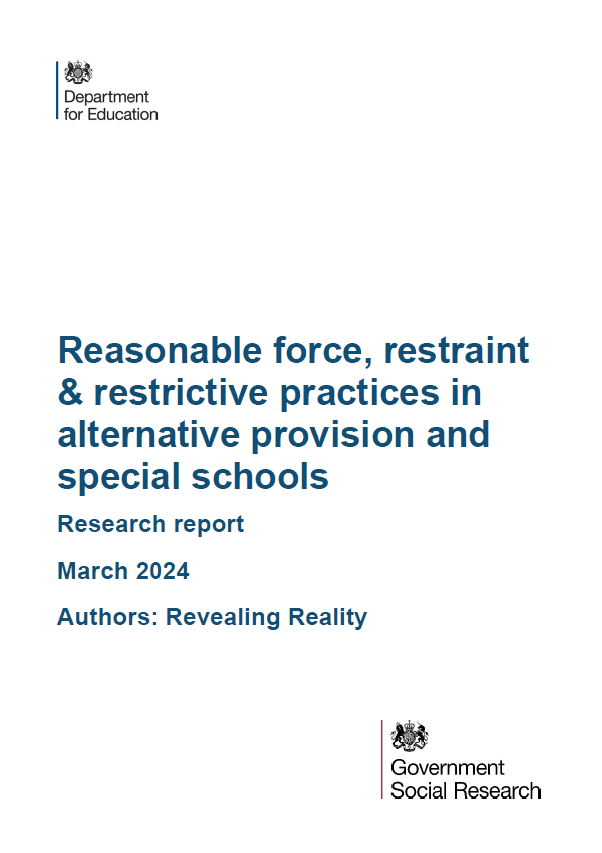The Department for Education wanted to explore whether its guidance on the use of physical restraint, reasonable force and restrictive practices in special schools and alternative educational provision (such as pupil referral units) should be updated.
During research carried out in the spring and summer of 2023 Revealing Reality interviewed teachers, school leaders and other in safeguarding roles in 45 of these educational settings, visiting four of them in person, to explore their policies and practice around restraint.
Hearing from staff within these settings and observing their policies and practice in context, two things became immediately clear. The first was that almost all of them placed great emphasis on preventative measures and de-escalation techniques to reduce or dilute disruptive and potentially destructive behaviour. The second was that these children, by and large, had complex needs.
The language schools used to describe restraint varied from one school to another. While some were using phrases like ‘supportive holding’ to describe physical restraint that may include full restriction of a child’s movement, others were describing guiding a child by the arm out of a room as ‘restraint’.
The policies and practice themselves also differed and the research found a tension between reducing over-stimulation and equipping children for life beyond school. Some schools were so determined to reduce the use of restraint that they had decided to systematically remove all triggers in the environment that may cause a child to become dysregulated. For example, one setting had chosen to invest tens of thousands of pounds on heavy, immovable furniture, so that children couldn’t pick it up and throw it.
But others felt removing triggers was not the best way to prepare children for the world beyond school, and preferred to focus on other methods to influence their behaviour or increase their emotional resilience. For example, one special school chose to introduce stimulus gradually to children’s classrooms, knowing there was a risk it could cause them to become dysregulated in the short-term – and maybe even warrant a physical intervention – but believing it was the best way to gradually prepare them for life after school.
For these reasons and others, it was clear that a blanket reduction in physical restraint could have unintended consequences.

